| Guide for Teaching World Geography in Grades K-12 |
| www.studenthandouts.com > World Geography > Geography Teaching Guide |
|
Around the World in 80 (or So) Days So you've been told that you are going to teach a semester-long course on "World Geography" in your high school. If your school is similar to the ones where we have taught, chances are that there is no Geography textbook, and if it does exist, it's hopelessly outdated (think "pre-fall of the Soviet Union"). There might be money in the budget for buying materials, but what do you buy? What do you cover? How on earth do you fit the world into a single semester? We've been there, and we're here to help. The first thing to do is divide the world into areas (which will equate to units of study). If you aren't given a mandatory list of units, have no fear--we've done the work for you. To the left are the units which you can also access on our main Geography web page. 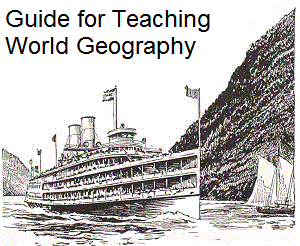 As you can see, we have divided the world into 10 regions, then divided these regions into 26 units. Of course, you can vary how much time you spend on each unit. You may even leave out some units altogether (like the "Six Modern Celtic Nations," a unit which comes courtesy of a proud Irish-American teacher who taught at a high school with a large Irish-American student population). As you can see, we have divided the world into 10 regions, then divided these regions into 26 units. Of course, you can vary how much time you spend on each unit. You may even leave out some units altogether (like the "Six Modern Celtic Nations," a unit which comes courtesy of a proud Irish-American teacher who taught at a high school with a large Irish-American student population).If you are a homeschooling parent, you can easily stretch your Geography course out over an entire academic year. If you are a high school teacher squeezing this course into a semester of 90 days (which we'll boil down to 80 days when you consider snow days, school-wide assemblies, etc.), you are looking at an average of three days per unit (if you don't skip any units). Can it be done? Can a teacher go around the world in eighty (or so) days? Of course! All it takes is organization and thoughtful planning. What do I cover in each unit? The first thing to ask yourself is: What is the objective of this course? The primary objective of a high school-level Geography course is to teach kids about the world--its regions, history, politics, current events, environments, and cultures. A Geography course will involve students learning everything from the names of national capitals and leaders, to the environmental disasters that face many areas, to political crises happening today. |
|
Our World Geography Units Region 1: Africa Unit 1: Eastern Africa Unit 2: Middle Africa Unit 3: Northern Africa Unit 4: Southern Africa Unit 5: Western Africa Region 2: Arctic and Antarctic Unit 6: Arctic and Antarctic Region 3: Asia Unit 7: Eastern Asia Unit 8: South-central Asia Unit 9: South-eastern Asia Unit 10: Western Asia Region 4: Europe Unit 11: Eastern Europe Unit 12: Northern Europe Unit 13: Southern Europe Unit 14: Western Europe Region 5: Latin America Unit 16: Caribbean Unit 17: Central America Unit 18: South America Region 6: Micronesia Unit 19: Micronesia Region 7: Oceania Unit 20: Australia, Melanesia, New Zealand, and Oceania Region 8: Polynesia Unit 21: Polynesia Region 9: Northern America Unit 22: Northern America Region 10: United States of America Unit 23: USA: Midwest Unit 24: USA: Northeast Unit 25: USA: South Unit 26: USA: West |
One of the terrific things about teaching Geography is that the content and focus change from year-to-year. For example, let's look at the unit on Eastern Africa. A decade or so ago, most teachers would not have gone into any depth on a country like Somalia. But in recent years, the terror caused by Somali pirates made it into the news. Now, Geography classes are looking at the political conditions in Somalia that allow these pirates to flourish. Likewise, the genocide in Rwanda, graphically illustrated in the critically acclaimed film "Hotel Rwanda," has gained international attention. Then of course there is the "Kony 2012" movement focused on Uganda. Clearly, the study of Eastern Africa will involve a packed 3-5 days. A lesson on the financial disaster faced by the European Union is perfect when studying Greece as part of the unit on Southern Europe. Students can also learn about the atrocities committed in the former Yugoslavia when studying this unit, perhaps aided by a film such as Harrison's Flowers. You have the units laid out before you. If you browse through our unit listings, you will see numerous worksheets, activities, and more, focused on both the units as a whole, as well as on individual countries. As the instructor, you are free to use what you want, and ignore what you do not want. You are likewise free to add whatever you want to your own course. In the past, for example, we have always tried to find guest speakers for our Geography classes. We might invite a "real live Russian" to come in and tell kids what it was like growing up in the Soviet Union, show pictures, talk about life in Russia today, etc. (And trust us...kids are always riveted by these guest speakers. Just be sure to have each student prepare a couple of questions beforehand.) Keep It Fresh Because world politics change from year to year, you can expect your Geography course content to vary from year to year. During the Iran-Contra hearings, Nicaragua was a big topic of interest. Recently, thanks to Hugo Chavez, Venezuela has become a popular country to study. And of course, let's not forget the Arab Spring. We here at Student Handouts are here to help. We don't tell you what to teach or when to teach it. We simply organize the subject into workable units of study. Within each unit of study, we attempt to include as many educational tools as we possibly can, with new items added constantly. We have everything from Study Games, to crossword puzzles, to movie/documentary reviews complete with questions and vocabulary terms. Best of all, 99% of what we offer is completely free. Mistakes to Avoid Remember all of the great recommendations we made on teaching students about places like Eastern Africa? Well, one of the biggest blunders Geography teachers make is focusing on tragedy, particularly when dealing with Africa. Far too often, students watch "Hotel Rwanda," study Somali pirates in the news, and then their study of Africa is over. This tends to leave students with a very negative impression of Africa's history and cultures. |
| Be sure to include a fair mix of the positive with the negative. For example, when studying Eastern Africa, discuss topics like the rich cultural and religious history of Ethiopia, with its fascinating Coptic Christianity and churches carved from rock in the ground. Share recipes from the regions you study, and have students bring in ethnic foods they have prepared (typically done for extra credit). |
 |
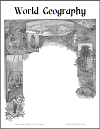 |
 |
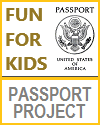 |
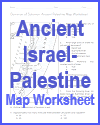 |
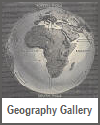 |
|---|
| www.studenthandouts.com > World Geography > Geography Teaching Guide |






